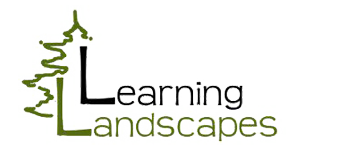Top 10 Covid Outdoor Classrooms
Some schools and districts are turning to outdoor learning during covi, by creating spaces where students are socially distanced and fresh air and sunlight greatly reduce the potential virus spread. Covid Outdoor classrooms offer many health benefits of leaning outside and give students the chance to have a collective laugh, relate to one another and see each others facial expressions and emotions. All which have immeasurable benefits for students mental and emotional health.
Learning Landscapes Design Can Help You Find Your Covid Outdoor Classroom Solution
As a design firm we are intrinsically pulled to how spaces look and feel. Our firm works across the country on single school and district wide initiatives. Below are some of the best examples we have seen from some of the thought leaders in the design of kids spaces. Are you considering outdoor classrooms? We are happy to help you in this effort to create outdoor spaces for healthy learning this school year.
Here are the top 10 ideas we have seen so far
1 – Flexible Outdoor Cube Amphitheater
This alternative middle and high school re imagined their small urban lot into a flexible space for students to gather and learn. The 5’x5′ block amphitheater give students a chance to arrange around a teacher, seat near one another, but also stay safely distanced. You will see a second more formal table area for seating in the back of the second photo. The flexibility of this space will add many options to the schools covid outdoor classroom organization options.
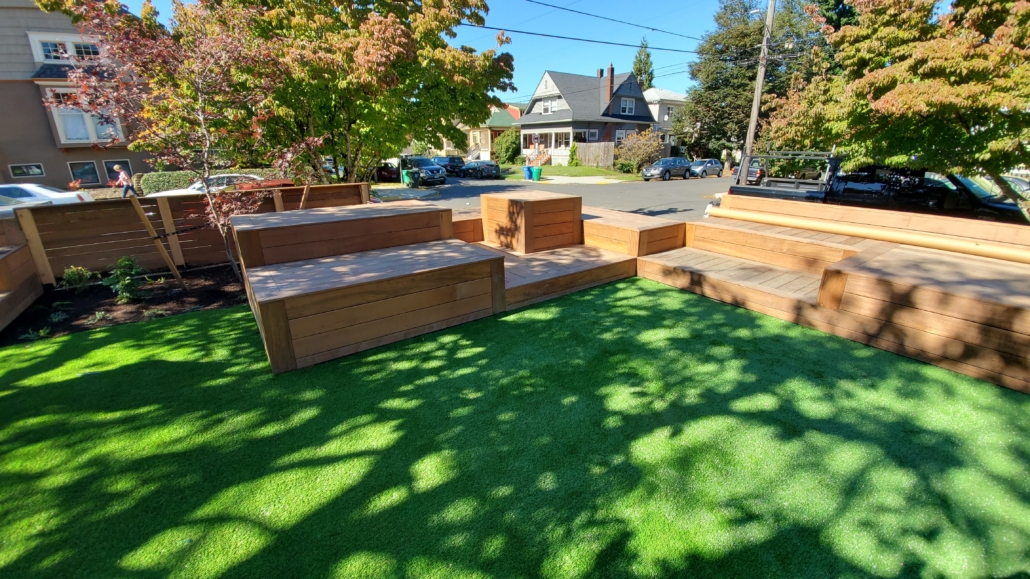
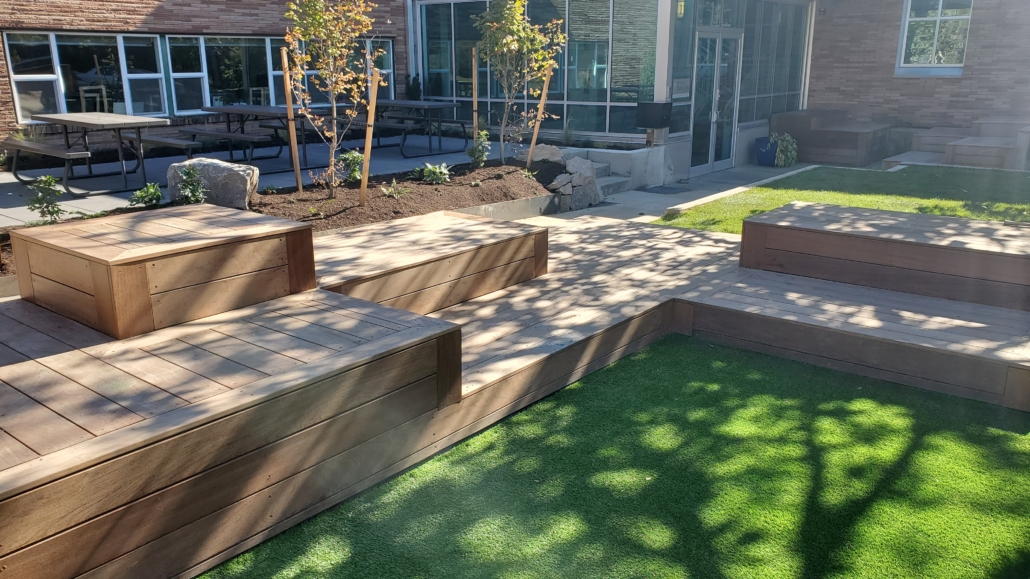
Photo/ Design Credit – Learning Landscapes Design
2 – Stump or Boulder Seating and Chalkboards
This is a simple set up that would work nicely for the early elementary years. Each student has a stump for a seat and a stump for a table. They are permanently set at a safe social distance. The teacher has a front and center position with a chalk board. These types of arrangements can utilize logs donated and delivered by local arborists. If you need some guidance on how to go about this let us know.
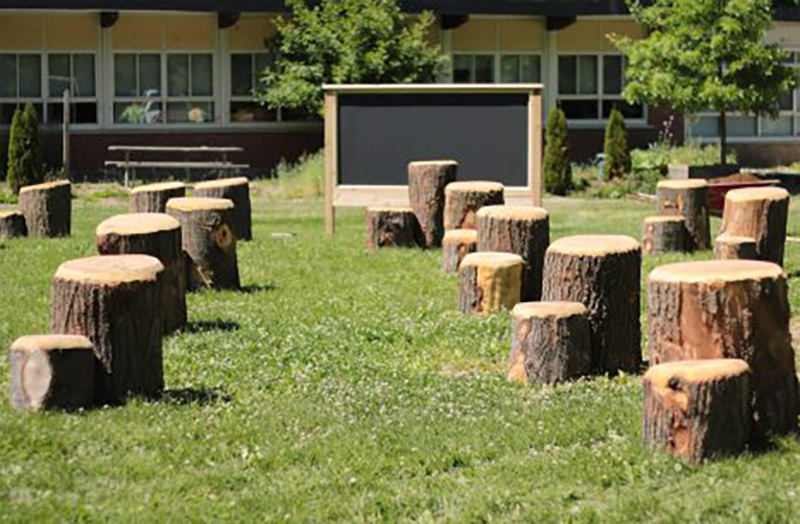
Photo/ Design Credit – Bienenstock
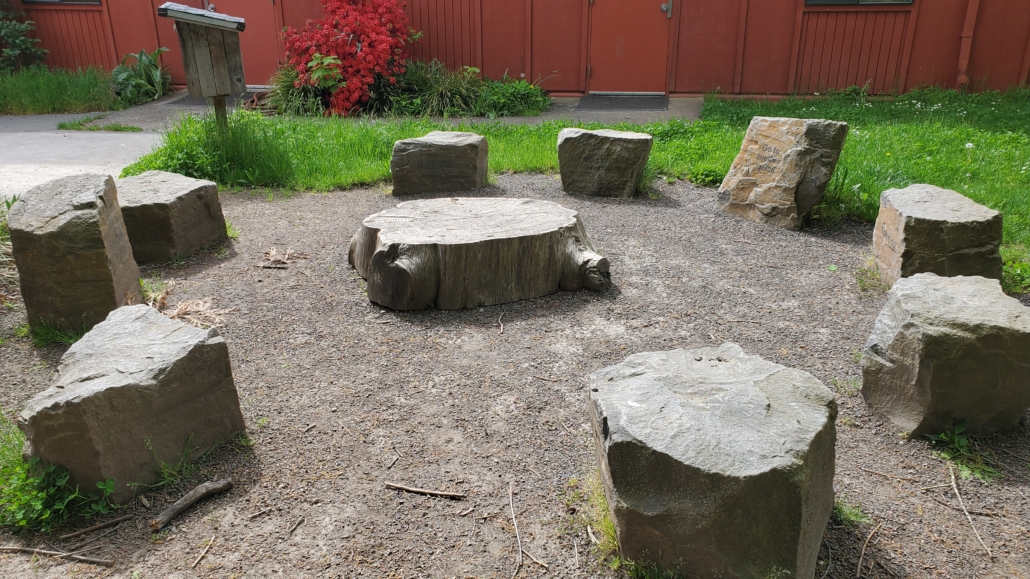
Photo/ Design Credit – Leaning Landscapes Design
3 – Overhead Structure and Learning Garden
This school got a head start on the outdoor learning options. By taking a portion of their playground area they were able to create a large outdoor classroom area. With an indoor space, covered outdoor space and three other distinct zones for play and engagement 5 groups can safely utilize the space at once. This type of design is definitely higher on the cost and planning end, but also results in a long term increase in educational value.
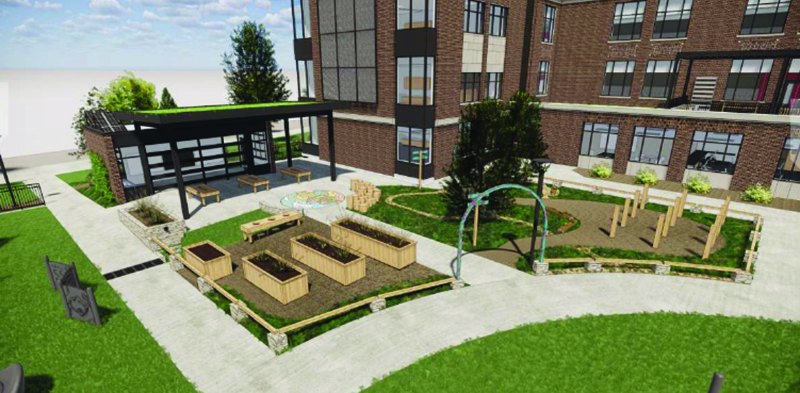
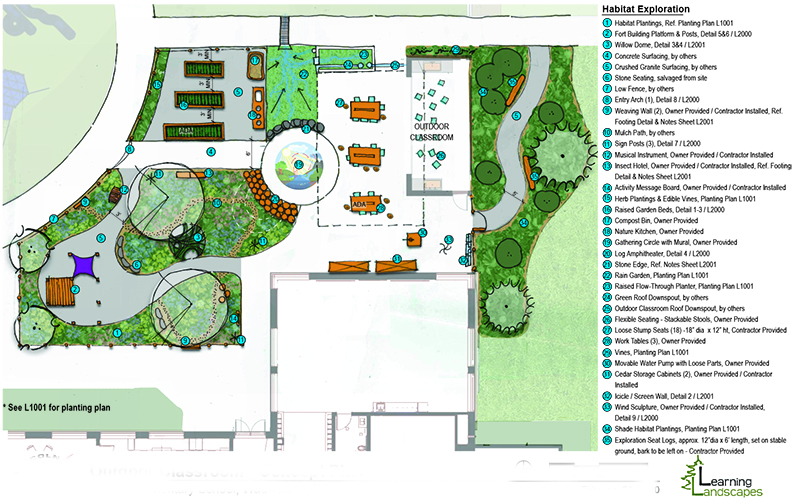 Photo/ Design Credit – Learning Landscapes Design and Architecture
Photo/ Design Credit – Learning Landscapes Design and Architecture
4 – Walls and Shade Sails
This is an exciting idea. I like seeing it in mass behind this front ‘classroom’ with stumps and wood walls the whole school building is recreated in this lawn area. It accounts for social distancing, storage, plants, shade, and writing surfaces.
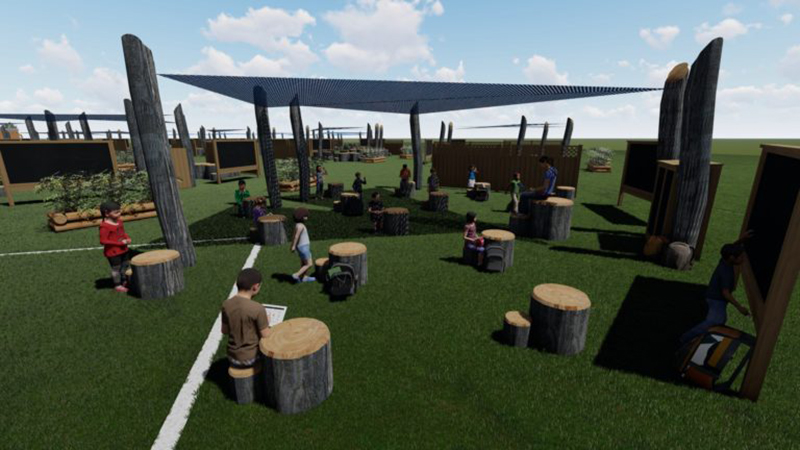
Photo/ Design Credit – Bienenstock
5- Hay Bales and Temporary Shade Sail
These Covid outdoor classrooms are simple and elegant. The use of straw bales is flexible and great for providing appropriate distancing. This quick shade sail was set up from existing structures to provide temporary shade. The teacher is centrally located and kids have space to sit, see each other, and even have some space to move on and over their bales.
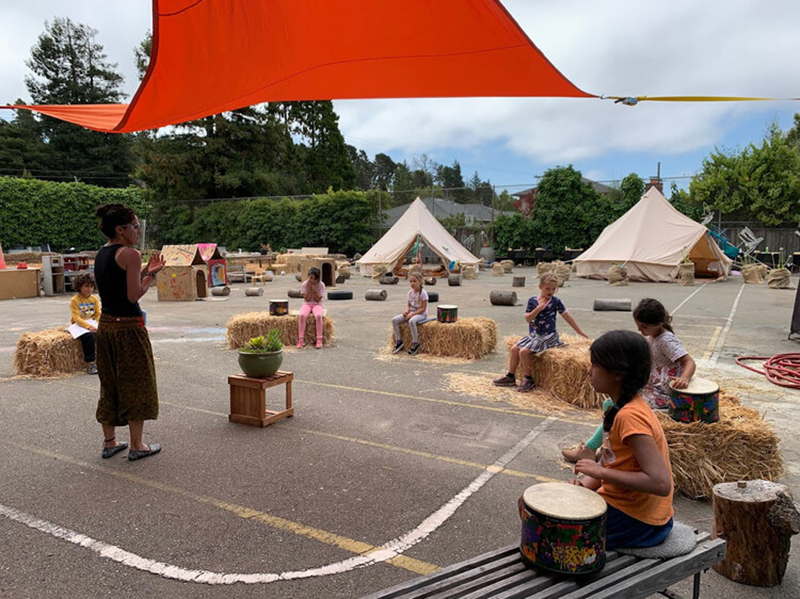
Photo Credit – Golestan Education and Green Schoolyard America
6 – Umbrellas and Small Tables
This school and mostly utilized element that they already have. Small tables and awnings and umbrellas have been rearranged to allow for safe distancing and shade for students. Creative reuse is one of the best tools for reducing financial inputs to outdoor learning.
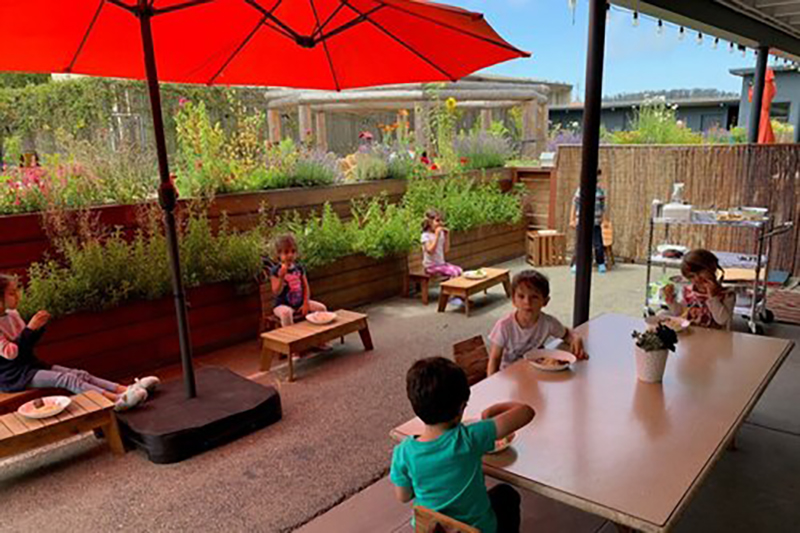
Photo Credit – Golestan Education and Green Schoolyard America
7 – Outdoor Furniture and White Boards
These furniture solutions are elegant and offer exciting options. While they are not shown in a social distancing set up, they could be reorganized to provide space as needed. I like the single rolling chairs with the attached desk. These work especially well for older students that need more of a writing surface. 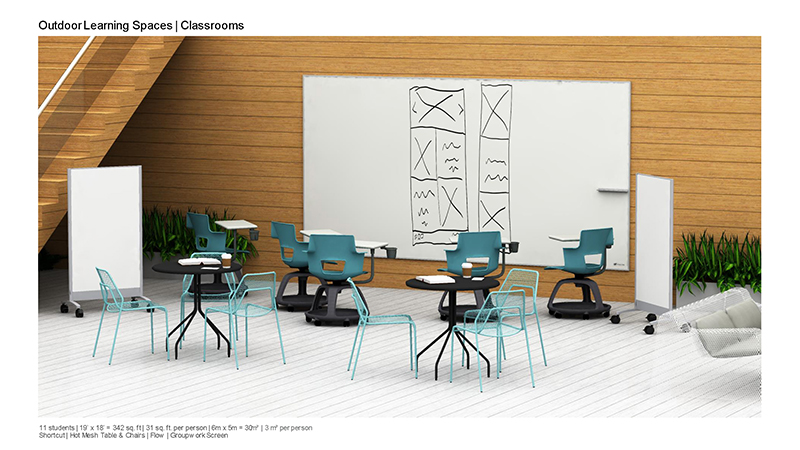
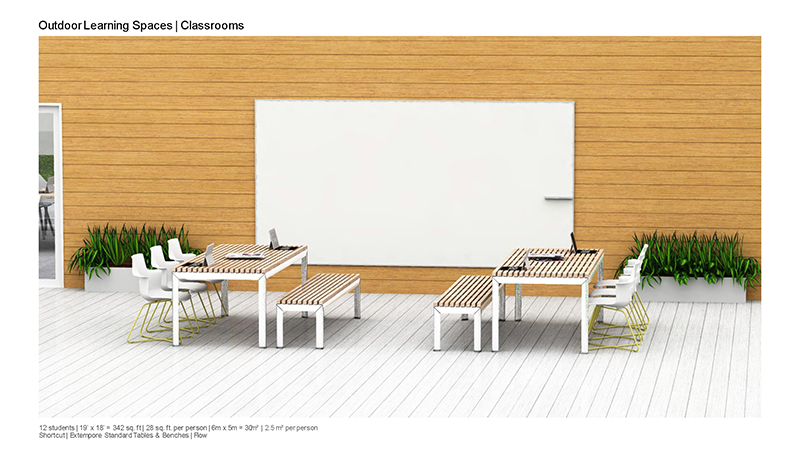
Photo / Design Credit – SteelCase
8 – Free Play ‘Construction Zone’
Schools that see the value in learning through play have turned a different direction from desks and chalk boards. This elementary school has created a construction zone where students use loose parts to build and create. This directly links to some of their STEM curriculum and offers opportunities for creative exploration. The space was created to support the use of loose parts. The loose parts kit from Pebble and Stick is focused on fort building.

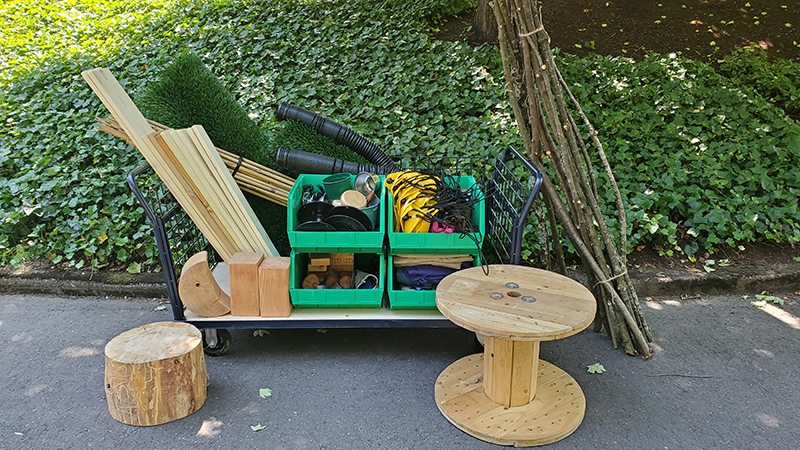
Photo/ Design Credit – Learning Landscapes Design and Pebble and Stick
9 – Teaching Pods with Covered Area and Block Seating
This is a nice teaching pod set up. It looks flexible and offers a writing surface and rain protection when needed. The seating boxes let kids work separately or in groups and look like they would dry fast. The whole set up looks movable and could be reused for many play and learning settings as the school approach changes.
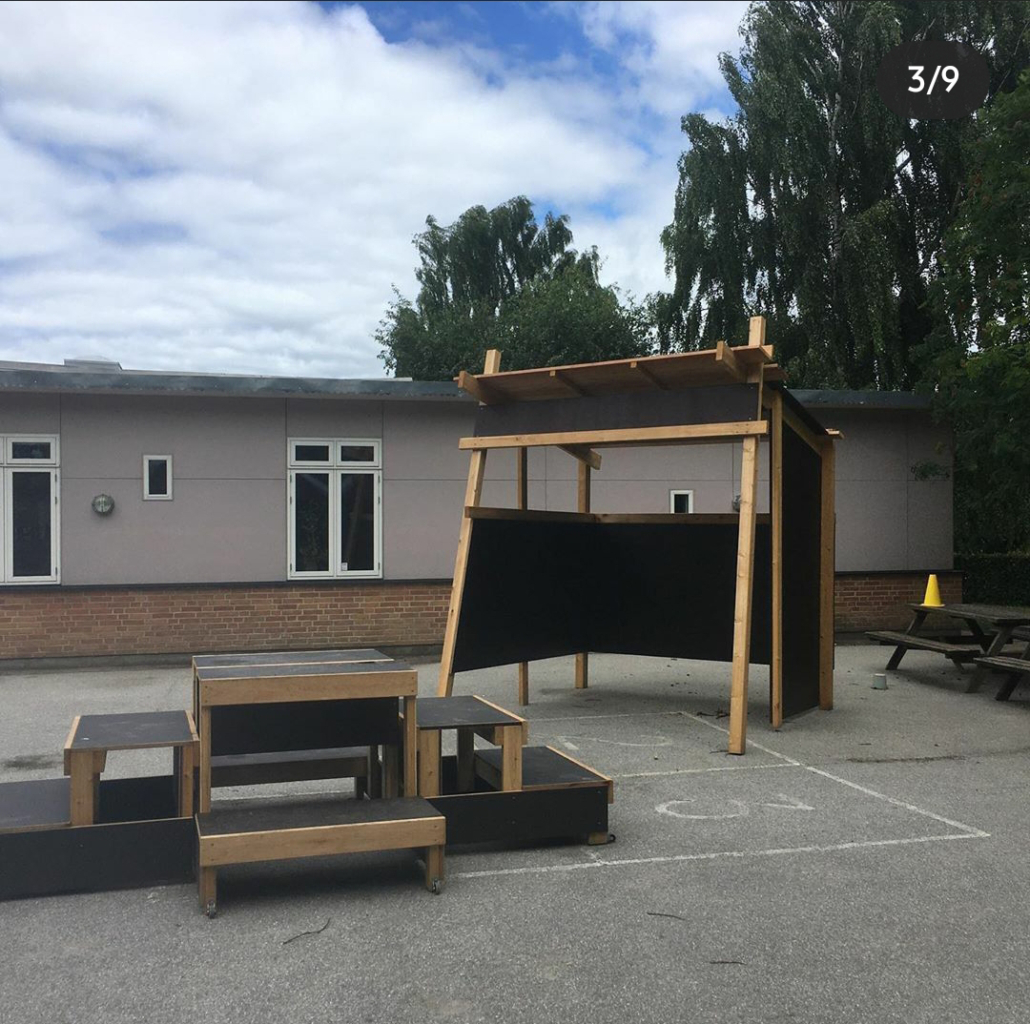
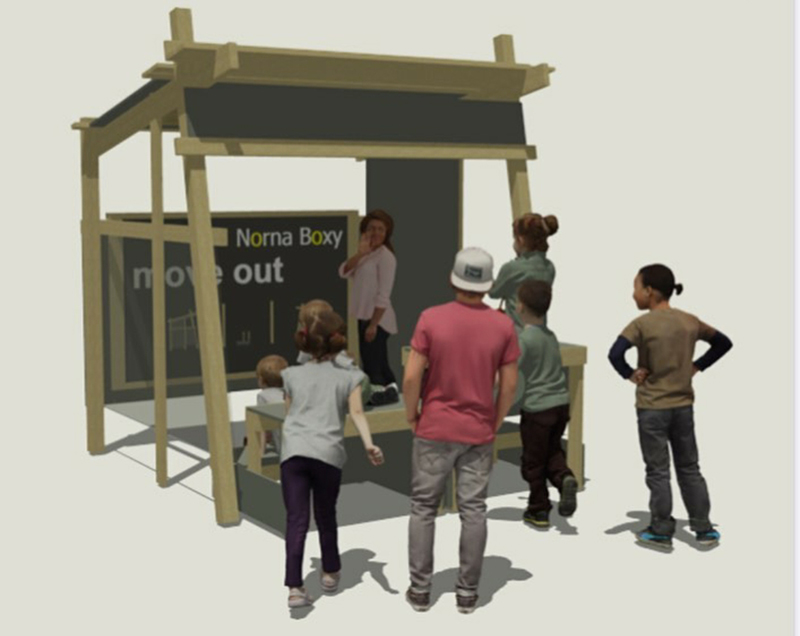
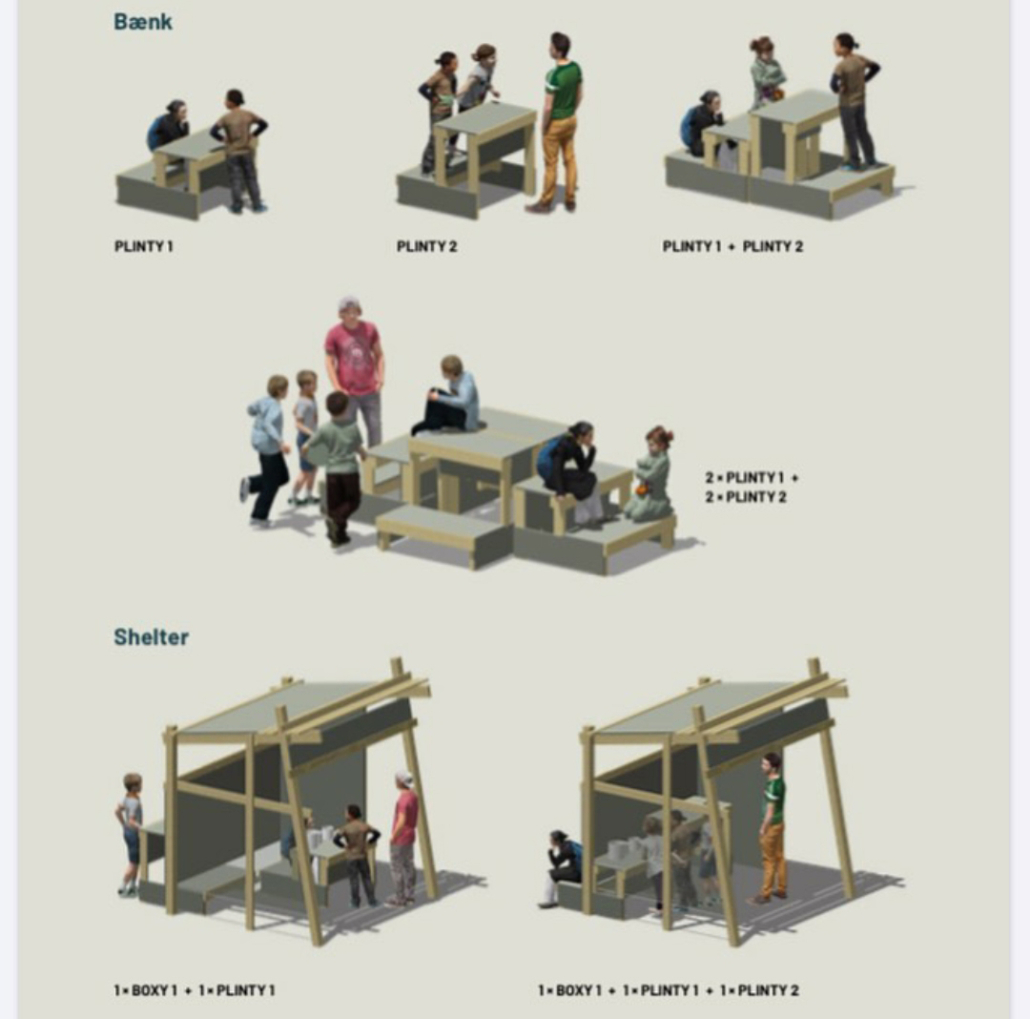
Photo/ Design Credit – Copla Legepladser
10 – Learning in the Garden
Covid outdoor classrooms don’t needs seats or chalkboards! An easy way to utilize existing green space is to take the kids out to explore and learn in the school grounds. While this requires teachers to adjust curriculum to the site and available activities, it reduces upfront investments in classroom improvements. Teachers could utilize fields, forested edges or native plant gardens too.
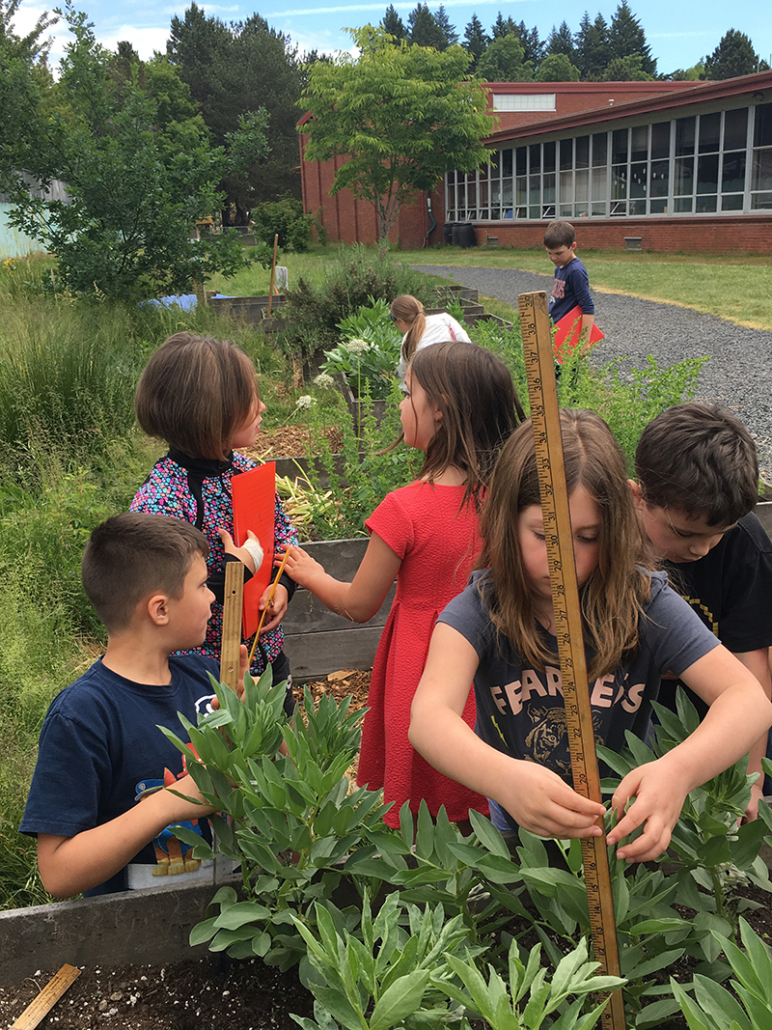
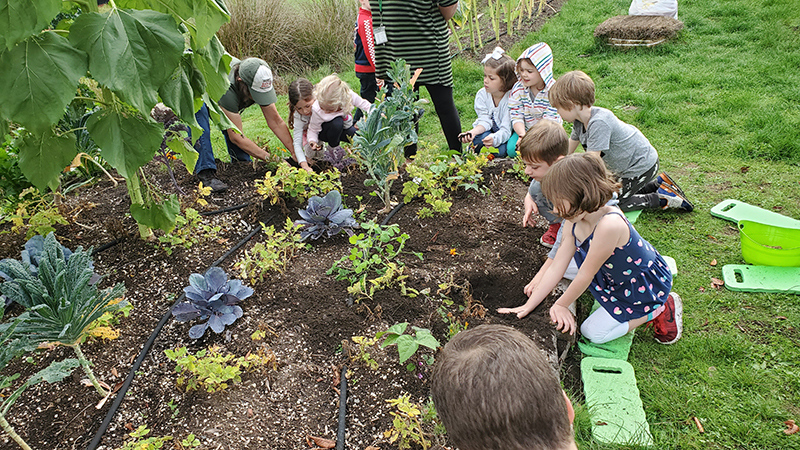
Photo/ Design Credit – Learning Landscapes Design
As our schools struggle to provide education amidst a pandemic, many can utilize school grounds to provide safer and more diverse learning spaces for students. These Covid outdoor classrooms are just a small collection of ideas and images to get our leaders inspired.
If you need further design assistance Learning Landscapes Design is a professional landscape architecture firm that specializes in creating spaces for learning and play. We would be happy to talk you thought the different approaches, costs, time frame, and other considerations to help you narrow down the best approach for your school community.
